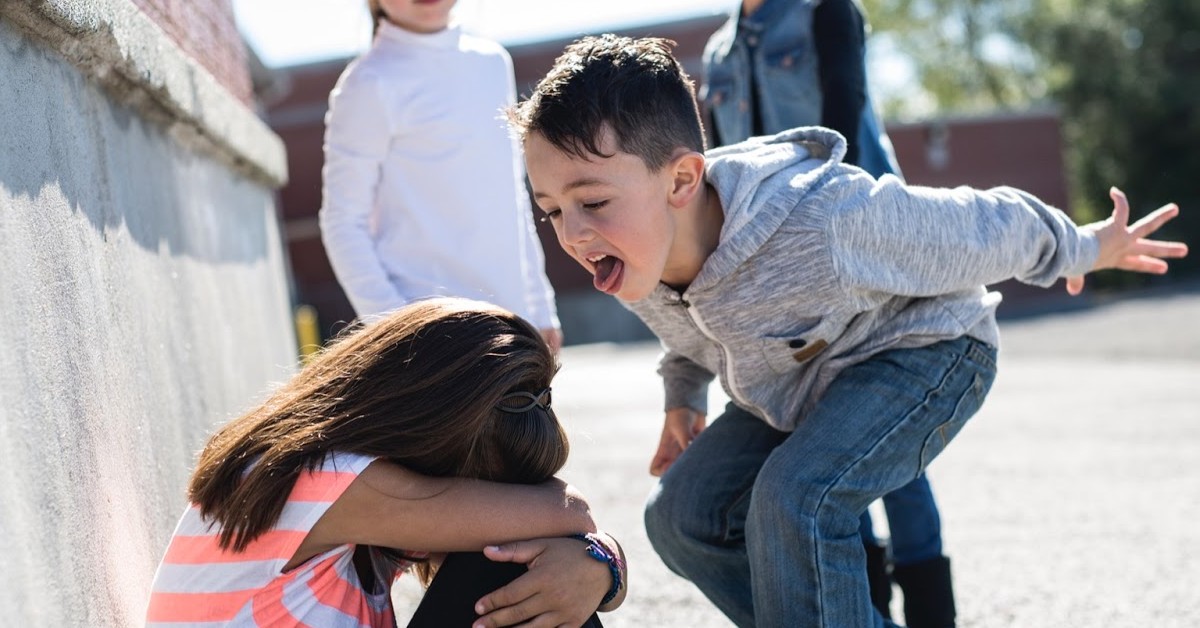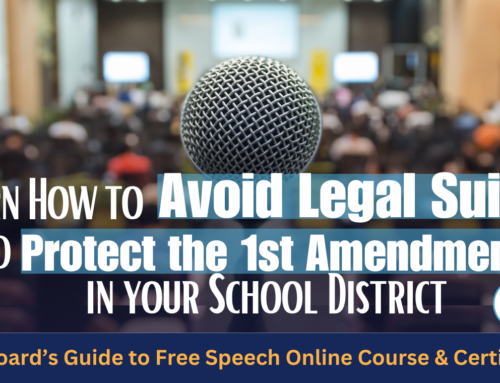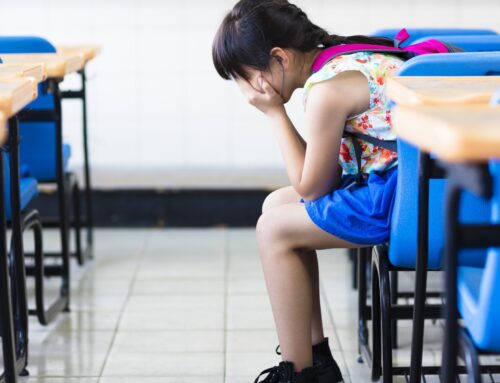
By Thomas McCracken, Ed.D.
—
The view was great, the embarrassment not so much.
I was twelve years old and was tied six feet up on the local tennis court fence with my pants pulled down to my ankles. The group responsible, led by the school bully, laughed as they walked away.
Left alone in my predicament, I wondered why no one stood up to the bully. Philosopher Stuart Mill was right when he said, “Bad men need nothing more to compass their ends, than that good men should look on and do nothing.”
“Why don’t they speak up?” That was the question on my young twelve-year-old mind as a victim of bullying—and it remains the question on the minds of parents and teachers as over 160,000 public school students are absent from class each day in America due to fear of bullying.
While educators are faced with many issues and distractions, none seems more prevalent, impactful, and tragic than bullying. According to Hertz, Donato, and Wright, 20% to 60% of students have identified as a victim in a bullying incident.
More eye-opening is the number of silent witnesses. Perry and Blincoe report that 63% of students say they’ve witnessed a bullying incident in the public schools, but most of them do not report it.
In spite of a multitude of anti-bullying programs in public schools across America, evidence-based programs that focus on the witnesses of bullying incidents are lacking.
Why are peer witnesses important? Espelage, Polanin, and Brown analyzed one such peer-response program and found this type of program to be highly effective in reducing bullying. According to their research, programs that focus on witnesses of bullying by teaching emotional learning skills and good character (such as conflict resolution, empathy, compassion, prevention, and intervention) reduce a school’s number of bullying incidents.
This approach also decreased bullying victims by 43%, a result attributed to the elevation of emotional learning skills and self-confidence in students. Not only did witness-based intervention programs reduce physical, in-person aggression, but Ray, Casas, and Ortega also saw this strategy reduce cyberbullying participants.
Six out of ten students report witnessing a bullying incident, but only a slight minority actually intervene while the incident is active. Research shows how effective peer intervention is in reducing bullying—and interestingly enough, a group of researchers (Hawkins, Pepler, and Craig) observed that it doesn’t matter what relational or social status the intervening student has in relation to the perpetrator or victim. Since the research says any student can effectively speak up to stop bullying, educators are not limited to working with a specific part of the witnessing demographic, but can educate and equip the entire student body.
In spite of empirical evidence that shows the extreme success of peer-based anti-bullying efforts, this solution is receiving little attention. Therefore, bullying events continue to increase in our public schools for at least three reasons: insufficient peer response, disconnected parents, and lacking policies.
Peers
If 63% of students in the public school system have witnessed bullying, this group must be considered as a viable and valuable part of any anti-bullying program.
At present, most anti-bullying efforts ignore this peer group of witnesses. In their investigation of anti-bullying programs available to school districts, Forsberg, Thornberg, and Samuelsson observed that the majority of programs focus on the victim, the perpetrator, or both, with little to no attention given to the witnessing peer group.
However, these peers have potential to make a sizeable difference. Psychology professor and researcher Christina Salmivalli observed these witnessing peer groups playing one of four roles:
-
Assistants (peers that actively join in with the perpetrator in their attacks on the victim)
-
Reinforcers (while not physically engaging the victim, they cheer on the perpetrator with verbal chants of affirmation)
-
Outsiders (silent witnesses that have a false self-perception of being neutral)
-
Defenders (peers who actively engage the situation with the goal of stopping the bullying)
And, let’s not forget that students see far more than just physical acts of bullying. According to Brady and Vangelisti, cyberbullying is not a secret or isolated event, with up to 85% of cyberbullying is witnessed by peers.
When the entire group of witnesses—the sleeping giant—is energized, empowered, enabled, and equipped, this group becomes a formidable bully-stopping force. Hawkins, Pepler, and Craig report that when peers learn to intervene, 57% of the time they can stop a bullying incident within ten seconds.
How then do we then wake this currently-sleeping giant, the witnessing demographic?
Salmivalli suggests that the answer lies in what factors motivate witnesses to step out of their comfort zone and intervene in the midst of a bullying incident. She contends that insufficient motivation is not due to lacking the skills required to identify an incident or the lack of a moral compass to differentiate between right and wrong. Rather, most students simply don’t have the internal and external resources to intervene.
Parents
Parents also have a part to play in combating bullying.
However, according to Doumas and Trull, schools and parents generally hold different perspectives about how to approach the problem of bullying. Parents tend to focus on elementary-aged kids, while schools seem to allocate more anti-bullying resources to high school students.
Additionally, parents and schools tend to view each other as adversaries, a problem that often surfaces during both private and public meetings. From many parents’ perspectives, school districts are primarily putting out the fires of bullying events, always behind and never proactive in their anti-bullying efforts. Parents would rather equip their own children with the skills needed to combat bullying at a student level, instead of every incident getting out of hand and receiving discipline (Howard, Landau & Pryor).
Lastly, parents are less engaged in their children’s educations now than in the past. Up until the early 1970s, the traditional home was comprised of a working father, a stay-at-home mother, and children that attended public schools. This structure allowed mothers to stay involved with parent-teacher associations, consistently attend meetings, help their children with homework, and volunteer at the local school—all events conducive to healthy relationships between all of the student’s stakeholders.
In our current culture, it’s not uncommon for both parents to work full-time jobs. Many parents don’t have the luxury (or the time) to be fully engaged. Additionally, with increased divorce rates, many children hail from single-parent homes or are being raised by their grandparents. Situations like these leave adults struggling with time management, unable to attend meetings or connect with parent/teacher groups, or even spend much time helping with homework.
Yet, research shows that children with involved parents are less affected by bullying. According to Cross, Lester, Pearch, Barnes, and Beatty, parents that are engaged in the academic life of their children—specifically involved in whole-school anti-bullying efforts—have kids who are significantly less at risk of bullying victimization or involvement.
Policy
One of the contributing factors to schools’ continuing struggle with bullying incidents—in spite of a plethora of policies and anti-bullying programs—could be the lack of a clear definition of bullying.
According to Cornell and Limber, bullying is marked by three distinct characteristics: (a) intentional social or physical aggression, (b) a marked imbalance of power between the perpetrator and victim, and (c) repeated aggression that goes beyond a single and isolated incident.
Even within this definition, legislators and policymakers face a great deal of ambiguity as they work toward a solution. The vagueness of the definition may hinder stakeholders in the identification and handling of bullying incidents. Other behaviors such as teasing, roughhousing, conflict, and general play may all be categorized together, further muddying the waters.
A further complication is perceived alignment—that is, the victim often tries to look like he is on good terms with the bully. According to Yadav, educators often fail to identify the victim of a bullying incident because the victim tends to fake affiliation with a bully or an aggressive group, out of a fear of isolation or advanced retaliation.
Teachers are forced to navigate the muddy waters of identification and response in their efforts to address the issue, but the witnesses of bullying incidents—the victim’s peers—have no such obstacles. Student witnesses can typically identify the victim in a bullying incident easily and quickly recognize such incidents when they occur. Thus, educators must consider witnesses of bullying incidents to be a valuable resource in addressing this issue when creating and implementing anti-bullying programs.
While the majority of school districts have anti-bullying policies in place, these policies lack synergy and continuity. According to Cornell and Limber, bullying continues to grow because of the autonomy of state and district anti-bullying efforts. Legislation and policies are put into effect, but there is little continuity between schools or among states.
In addition, while cyberbullying rates continue to rise, schools generally only address traditional and physical bullying occurring on campus. Communities find school districts lacking when it comes to written policies designed to address school violence that includes physical, emotional, verbal and cyberbullying components (Willard).
What We Can Do About It
Looking back to that dreadful day, hanging half-naked from the fence, what I needed most was to have peers who were enabled to intervene, parents who were engaged, and policy that would have helped navigate the ordeal.
Based on Bandura’s Social Cognitive Theory, middle school students in empathy development are the most likely to benefit from peer intervention training; therefore, anti-bullying initiatives should target this demographic to achieve the most success.
Additionally, parents should recognize their unique status in their child’s life as the primary and most influential stakeholder. Parents should invest in relationships with everyone who rubs shoulders with their child throughout the course of each school day. Educators and parents must both work toward open communication channels with each other, and all anti-bullying initiatives should be reinforced at home. Parents should inspire their kids to be the hero through peer intervention.
Lastly, all stakeholders should advocate for policy that supports the peer intervention model by speaking to administrators and their local school board. Each school district’s anti-bullying policy should address both traditional bullying and cyberbullying to bring an end to this national bullying epidemic.
Note from the Editor: We thank all our contributors for their insights and expertise. However, the views of guest authors or interviewees are not necessarily those of Noah Webster Educational Foundation.
About the Author:
Thomas McCracken is a military veteran, pastor, and educator who lives in Virginia’s Roanoke Valley with his wife Laurie. His education roles have included GED instructor, teacher and substitute teacher, school district anti-bullying consultant, and school board member. A lover of learning, Tom holds bachelor’s degrees in management and marketing, a seminary degree, three master’s degrees, an Ed.S degree in educational leadership, PhD studies from Carolina University in Organizational Management, and a Doctorate in Education (Ed.D.) from Liberty University in educational leadership. He was recently reappointed by the Virginia Speaker of the House to serve an additional four years on the Virginia Israel Advisory Board, tasked with managing all educational initiatives, including the next Israel Lunar Mission.






[…] Read more of Tom’s thoughts on the bullying epidemic here: https://noahwebstereducationalfoundation.org/peers-parents-and-policy-combating-bullying/ […]
[…] Read more of Tom’s thoughts on the bullying epidemic here: https://noahwebstereducationalfoundation.org/peers-parents-and-policy-combating-bullying/ […]
[…] have trouble in school, such as getting bad grades and failing to develop their social abilities. They may become a bully or be bullied. They may “act out” in class, have trouble focusing, and fail to create close friendships. As […]
[…] Bullying has, at best, a negative effect on children’s self-image. But not only are children more likely to commit suicide, they are at a higher risk for eating disorders, depression, loneliness, and sometimes increased violence. […]
[…] in discussions on looping, the entire classroom loops together. This means that students who are being bullied or are otherwise having issues with fellow students in their class lose the possibility of ending […]
[…] have trouble in school, such as getting bad grades and failing to develop their social abilities. They may become a bully or be bullied. They may “act out” in class, have trouble focusing, and fail to create close friendships. As […]